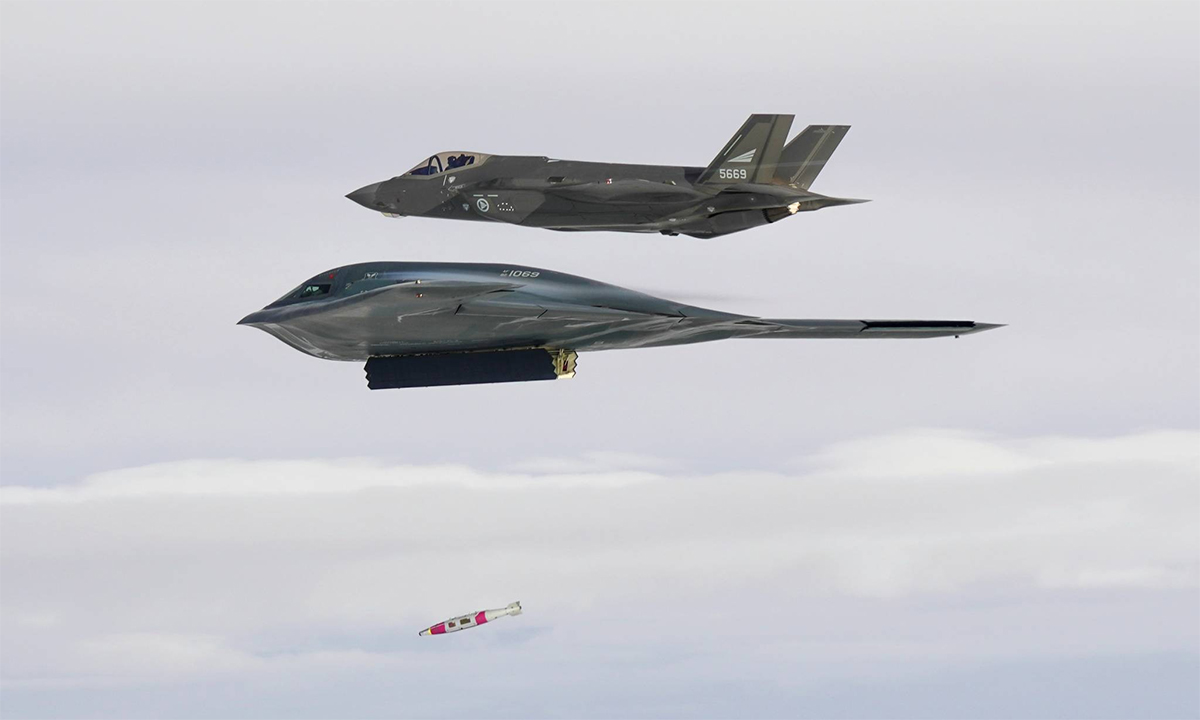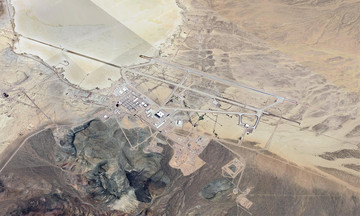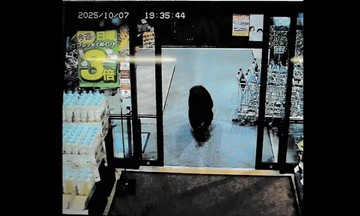The test, which took place on 3/9, involved a US B-2 stealth bomber, a P-8A maritime patrol aircraft, and 4 Norwegian F-35 fighter jets, but the information was only released this week. "The B-2 bomber played a central role, using Quicksink precision-guided bombs to attack and sink a simulated warship target", the US air force said.
In addition to testing the capabilities of the Quicksink anti-ship bomb, the test also aimed to "confirm the combat capability and strengthen the growing maritime role of the B-2 bomber", the air force added.
 |
Norwegian F-35 fighter jets escort a US B-2 bomber during an anti-ship bomb test on 3/9. Photo: USAF |
Norwegian F-35 fighter jets escort a US B-2 bomber during an anti-ship bomb test on 3/9. Photo: USAF
Quicksink is the anti-ship variant of the JDAM guided bomb, which is a guidance kit for conventional bombs. The original JDAM-equipped bomb has a maximum range of 25 km, while the extended-range JDAM-ER variant can hit targets more than 70 km away.
The US air force said the Quicksink bomb "meets the urgent need to quickly neutralize threats in vast ocean areas around the world".
The Quicksink anti-ship bomb first appeared in 2022 and was deployed from F-15E fighter jets. During the 2024 RIMPAC exercise, a B-2 bomber also used Quicksink bombs to attack two decommissioned amphibious ships, USS Dubuque and USS Tarawa, which served as targets.
The test off the coast of Norway is the US air force's latest effort to equip the Quicksink bomb to respond to increasing maritime challenges. In January, the air force also considered equipping the AGM-158C LRASM anti-ship missile with a range of over 900 km for F-15E and F-15EX fighter jets.
Nguyen Tien (AFP, AP, USNI)












